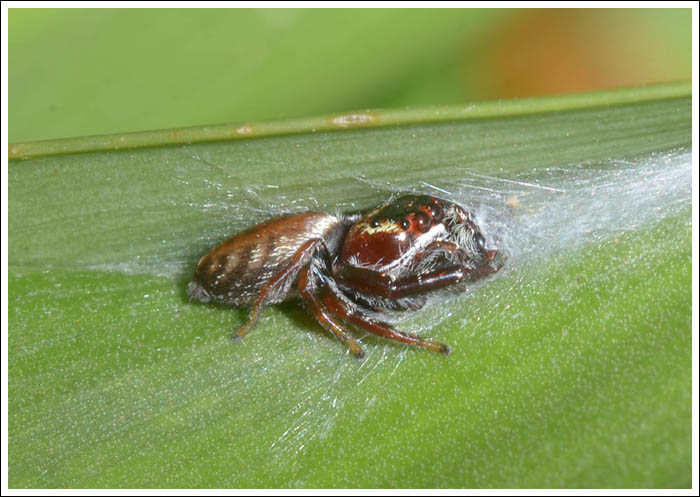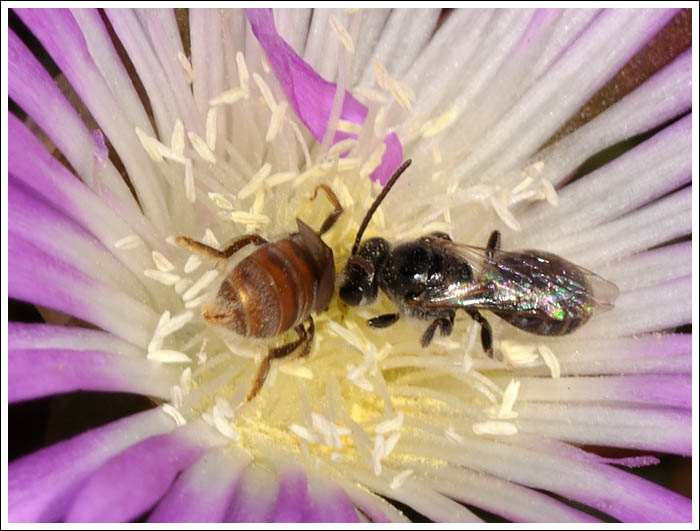In the neighbouring garden there are some clumps of agapanthus, and they have shown to be popular habitat for jumping spiders, with several species being observed and photographed. The bases of the clumps contain lots of dry litter, good cover, and the smooth strap-like leaves provide ideal conditions for the spiders to stalk and leap on insect prey that like to land and perch there in the sun. Photographs of one species were sent to Robert Whyte, co-author of the excellent Field Guide To Spiders Of Australia, who identified it as Jotus frosti. This spider has only fairly recently been rediscovered, photos of two males were taken on Kangaroo Island by Jurgen Otto, so this record establishes the species existence in Central Gippsland. Distinguishing features include the bands of white across the pedipalps, and long black setae above, and white below each femur, visible in the photographs.
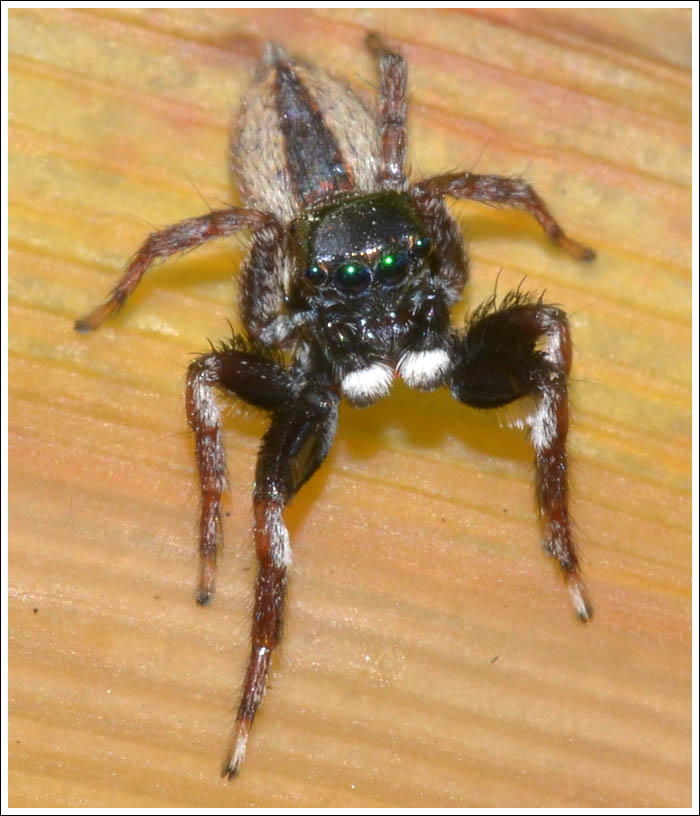
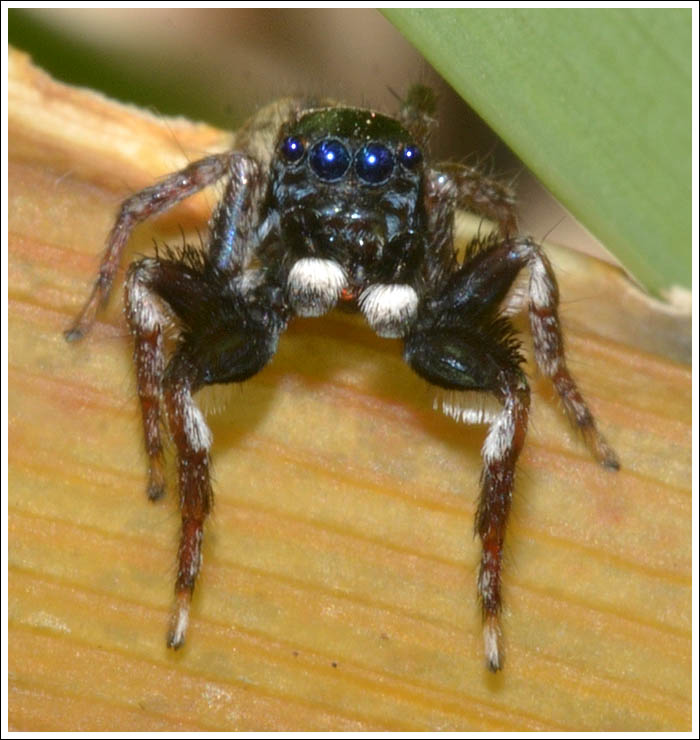

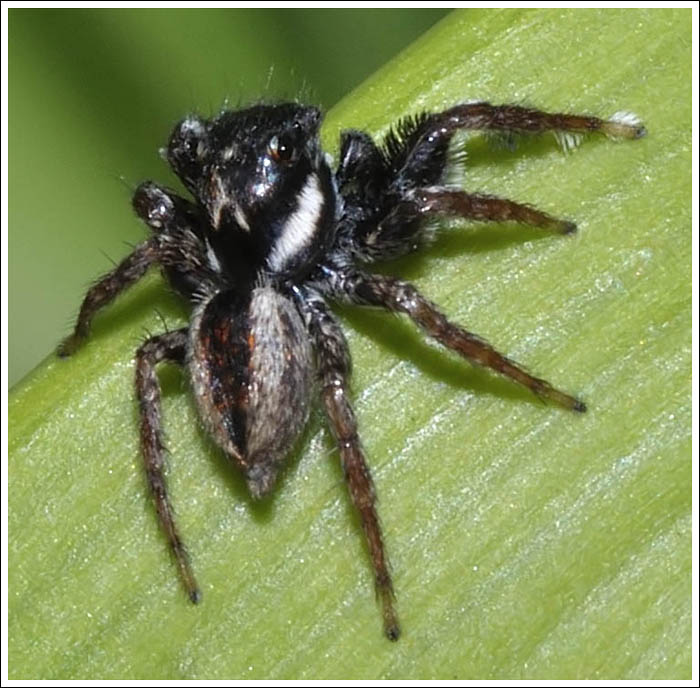
Close by the males and in some cases on the same leaf were female Jotus, in all probability females of the species, in fact on one occasion a male was watched displaying.
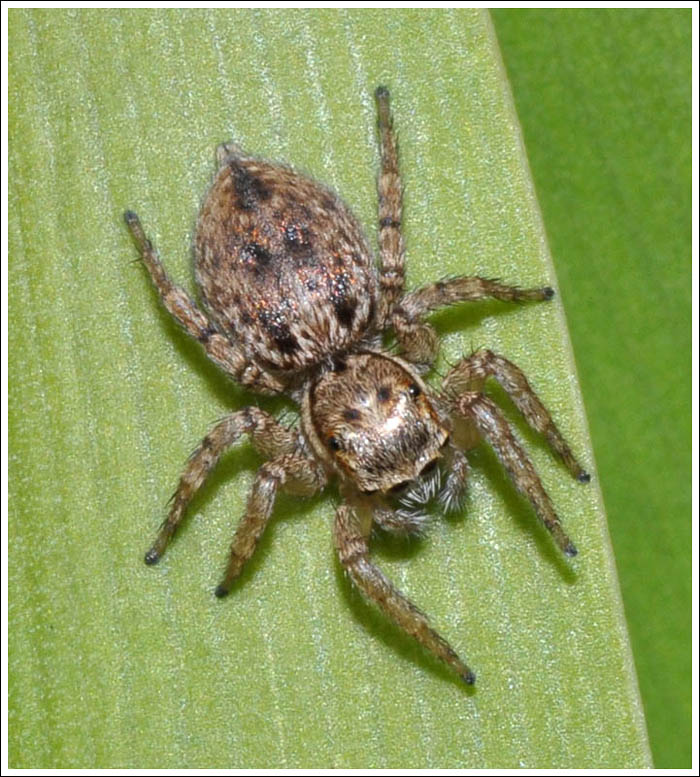
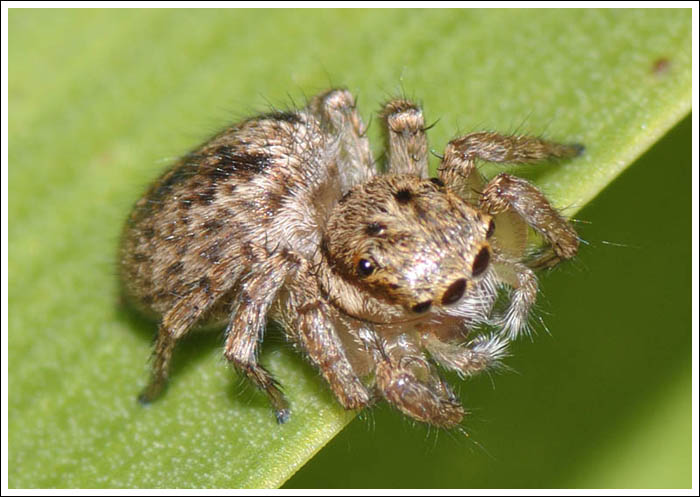
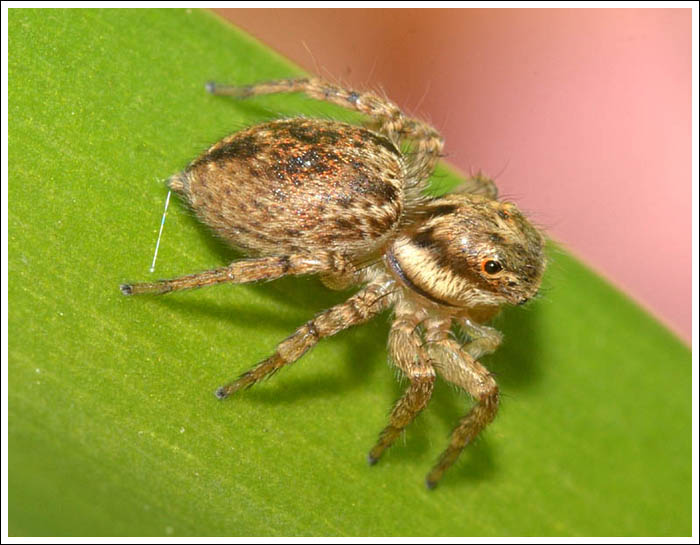
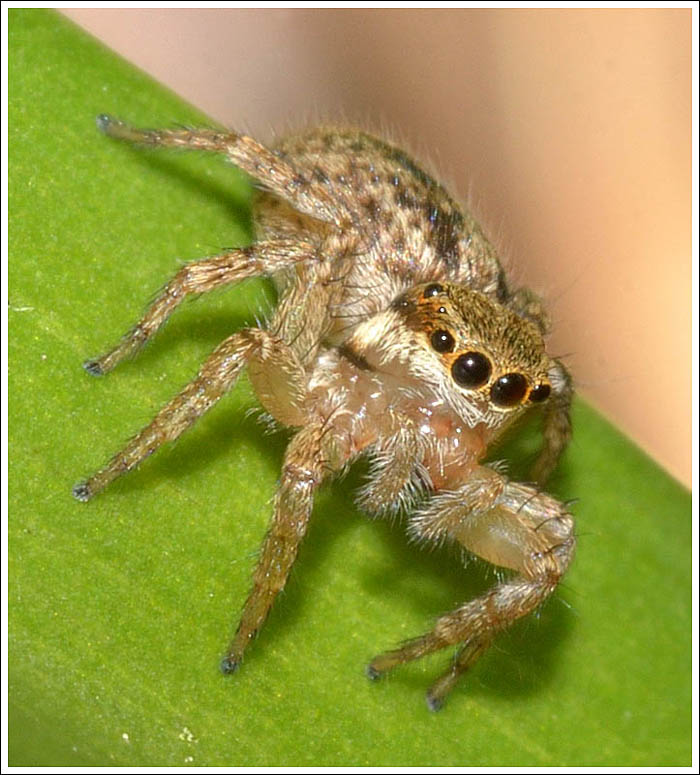
In the following picture an Opisthoncus necator has webbed two agapanthus leaves together to fashion a snug retreat, click picture to enlarge.

